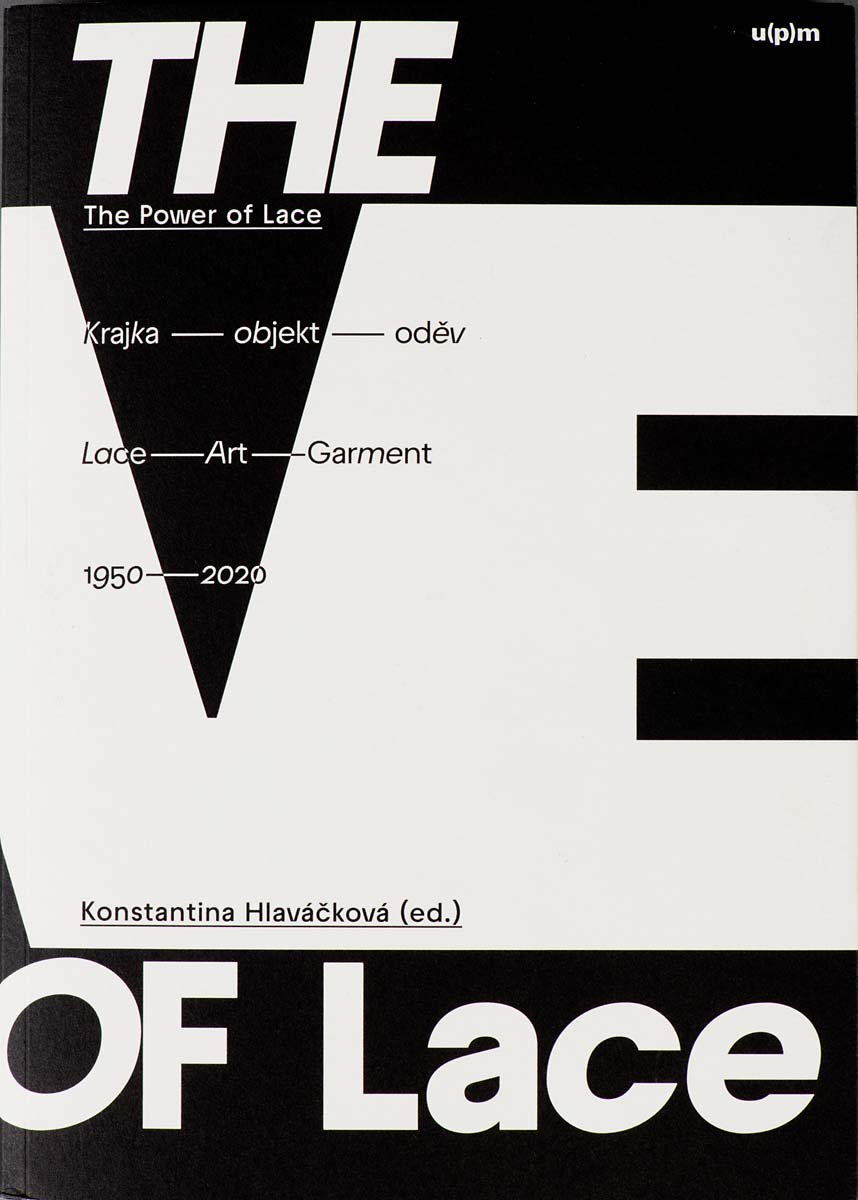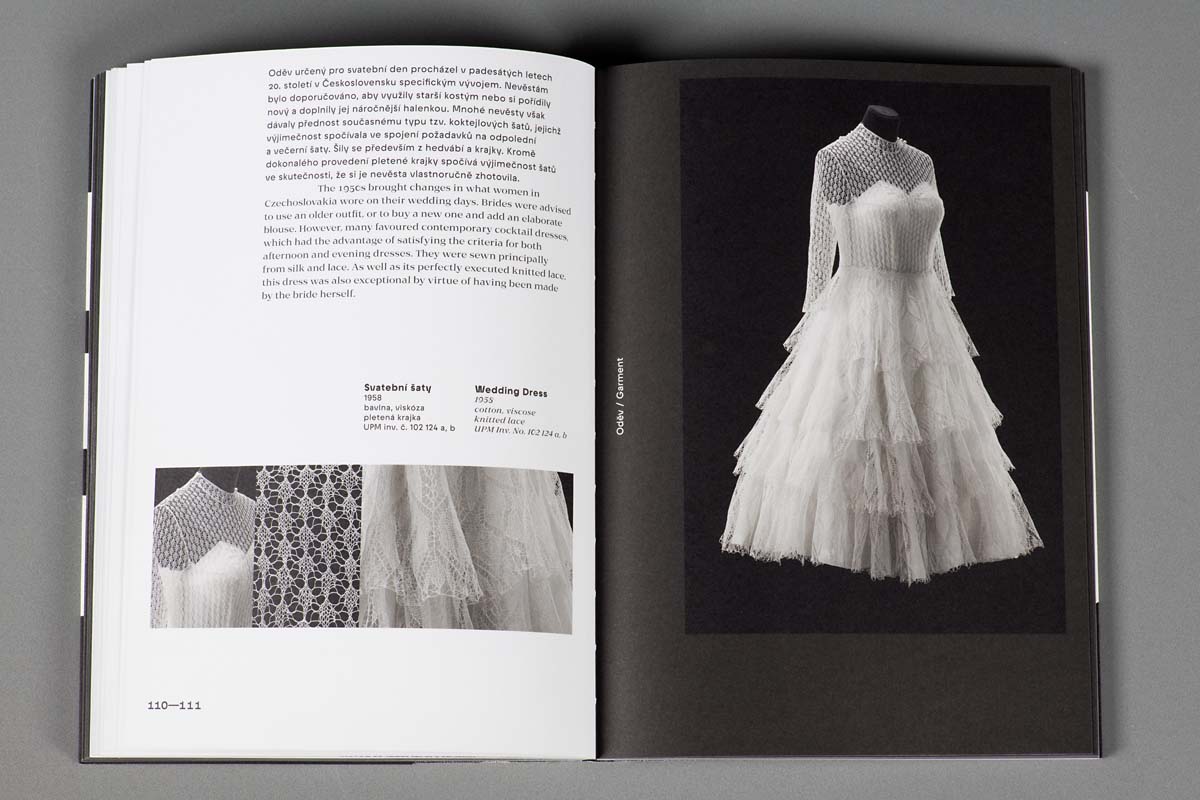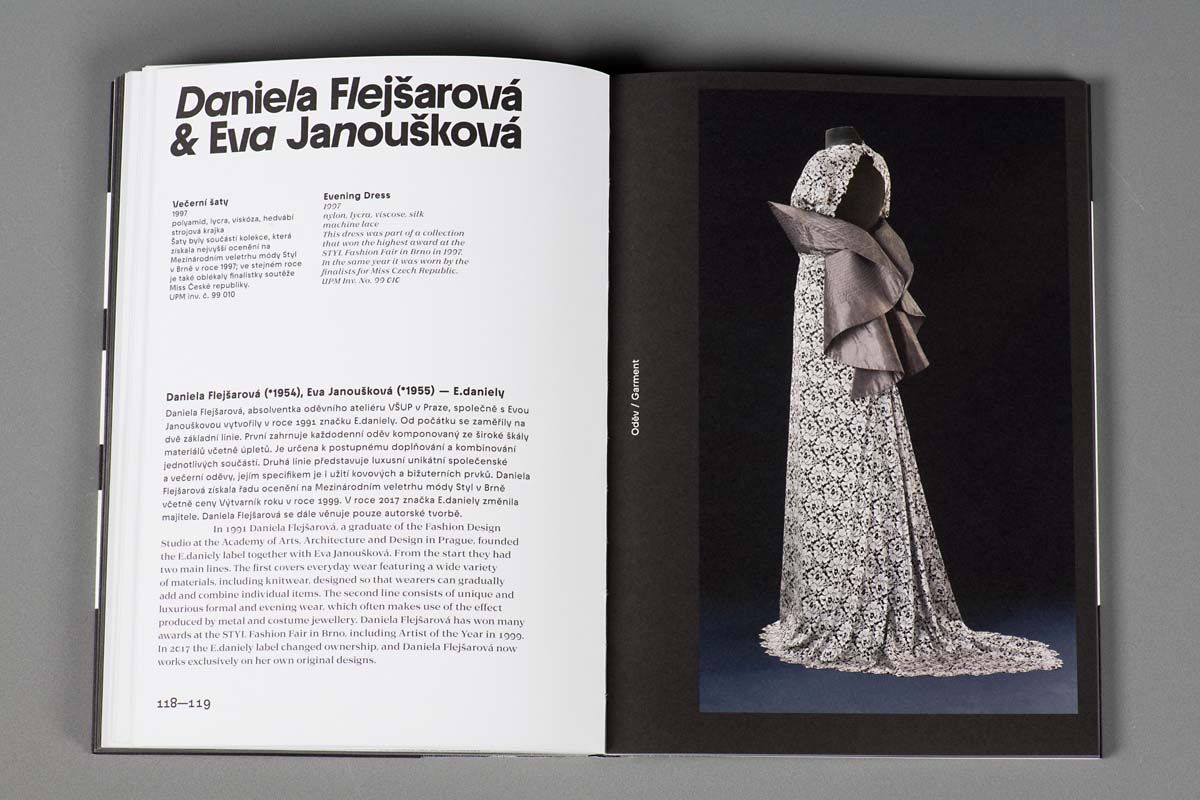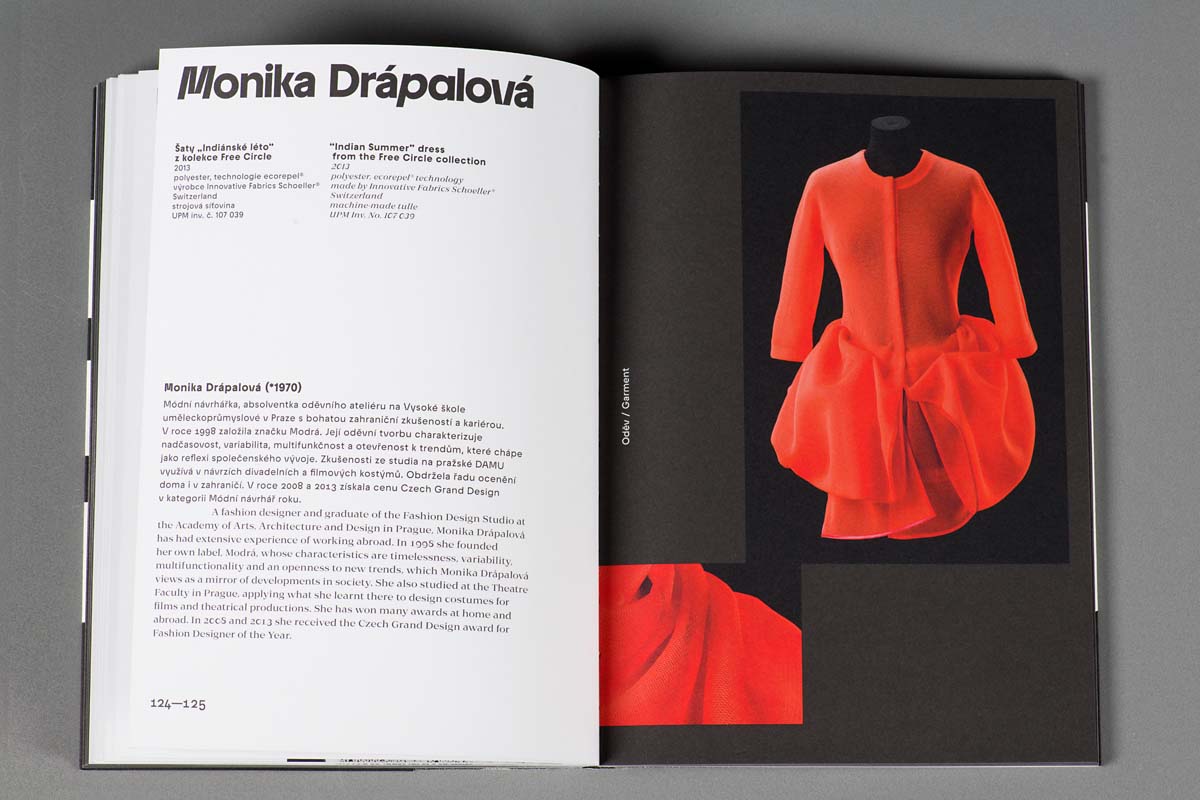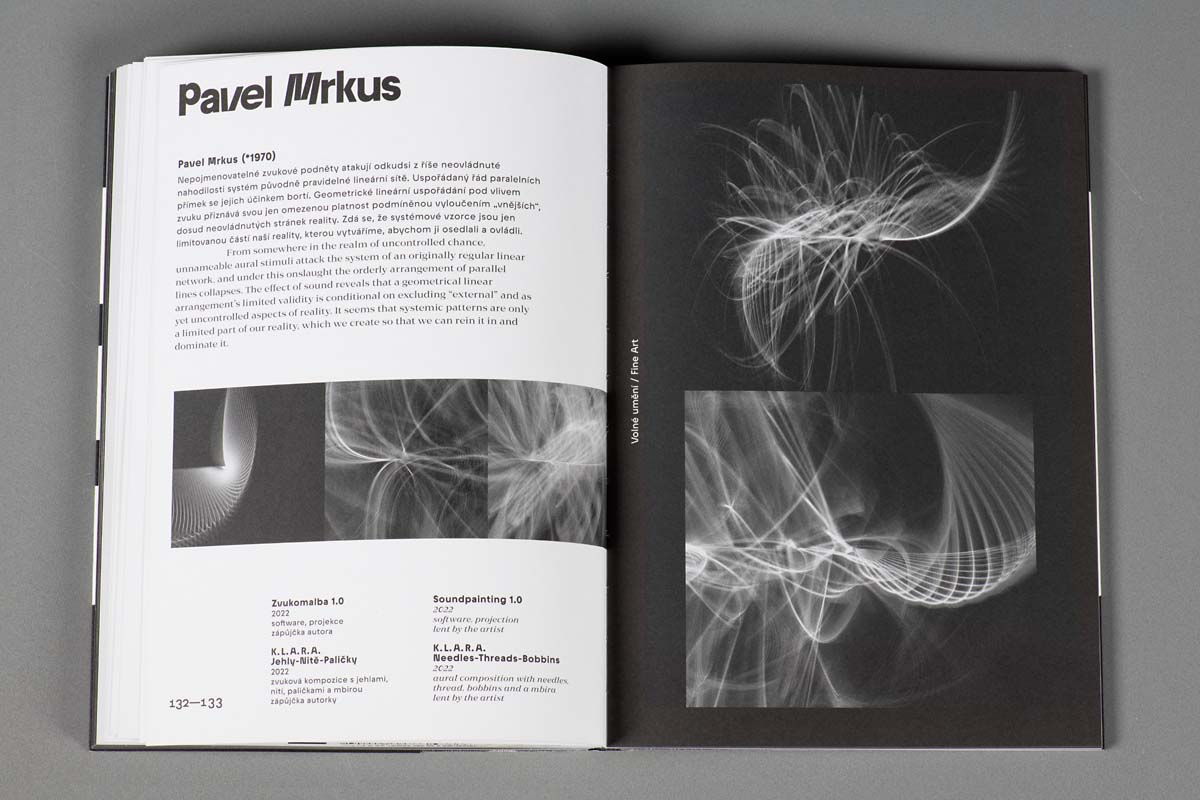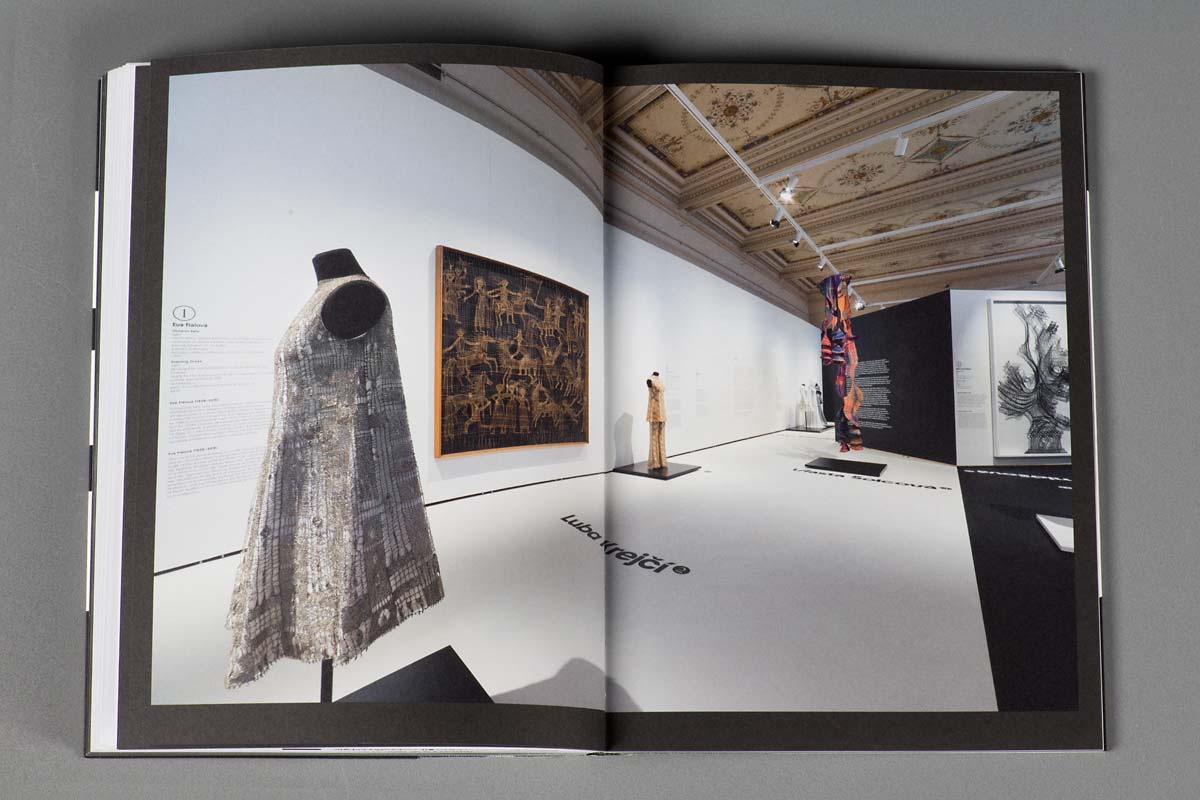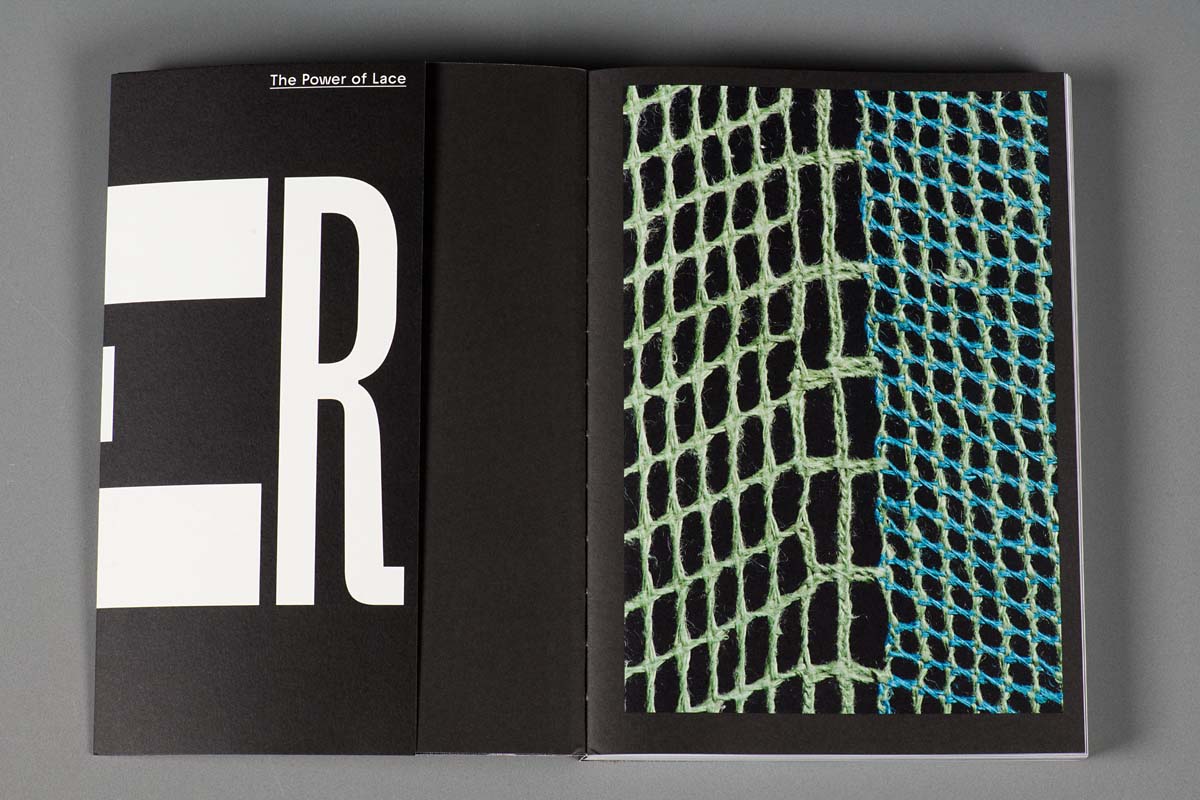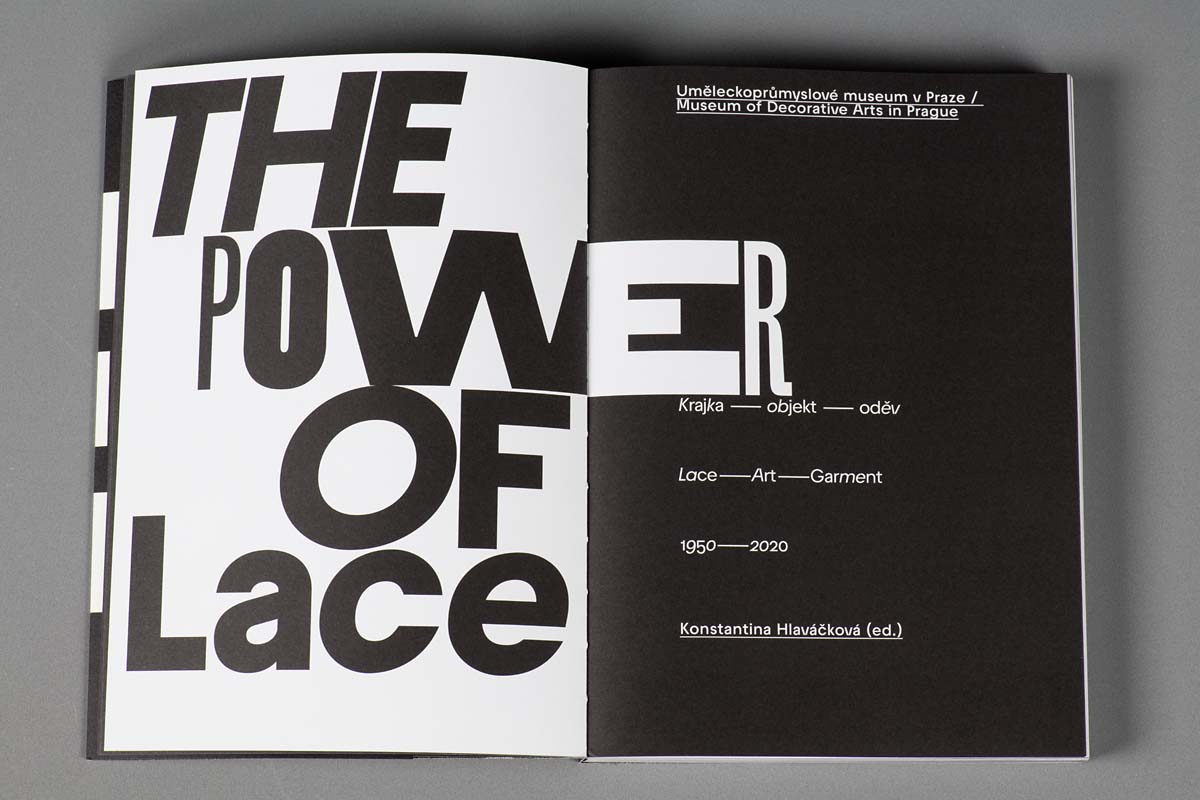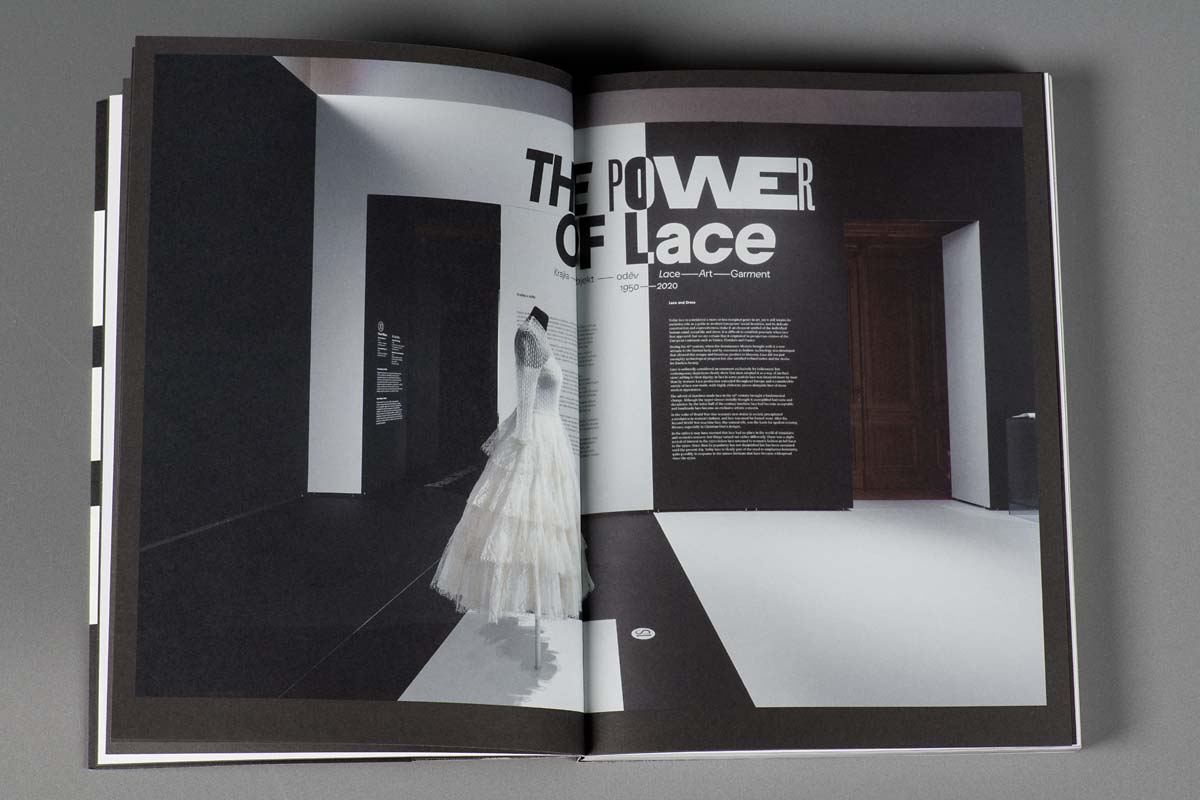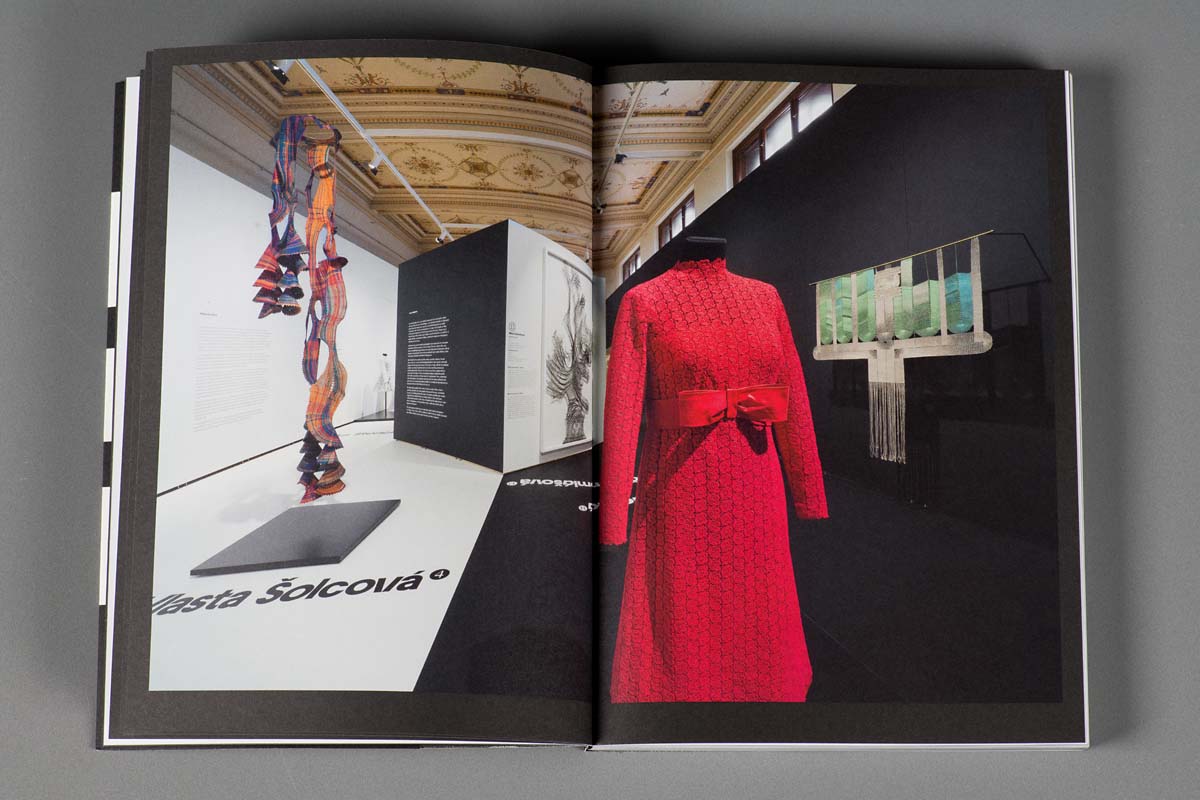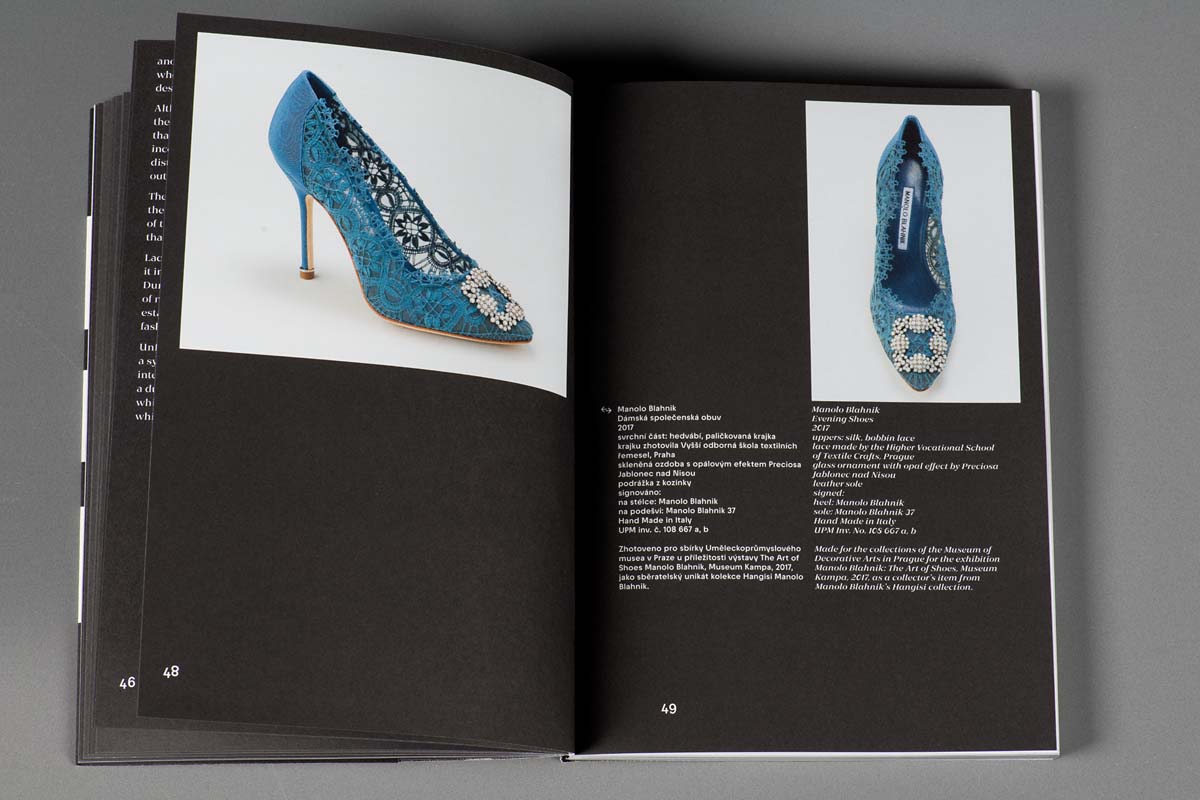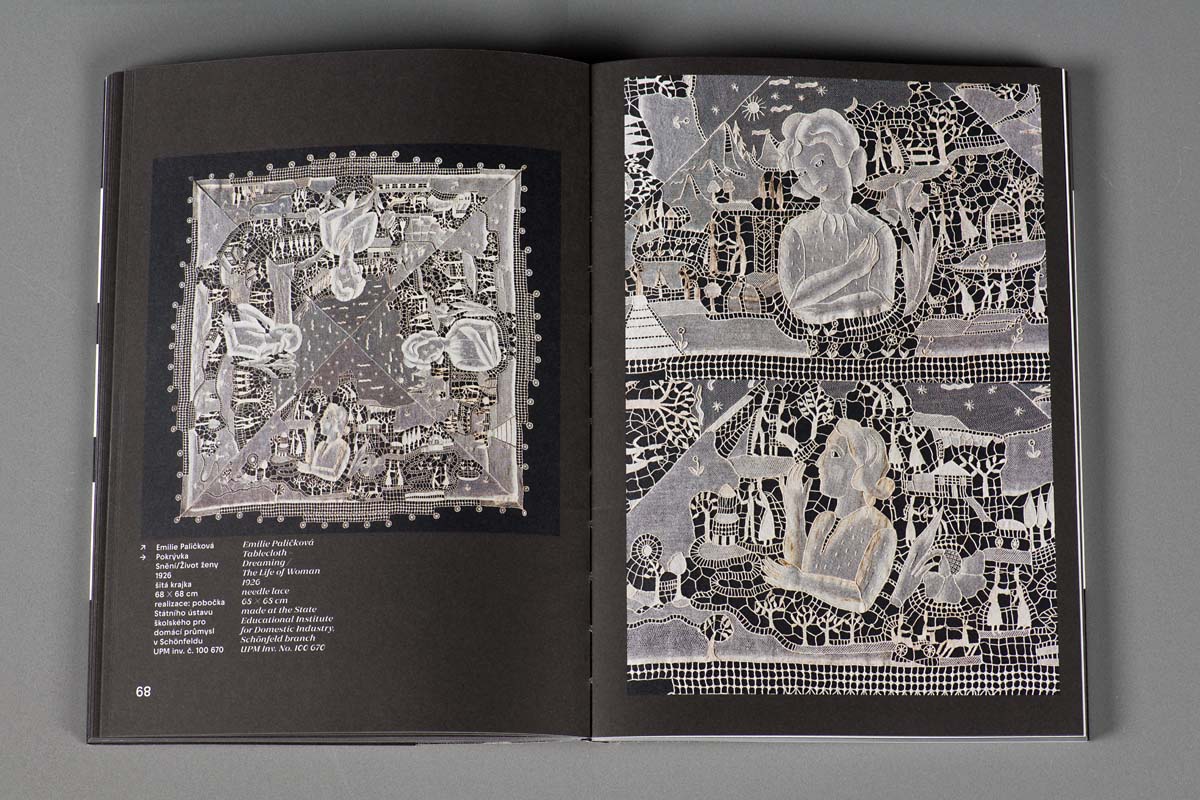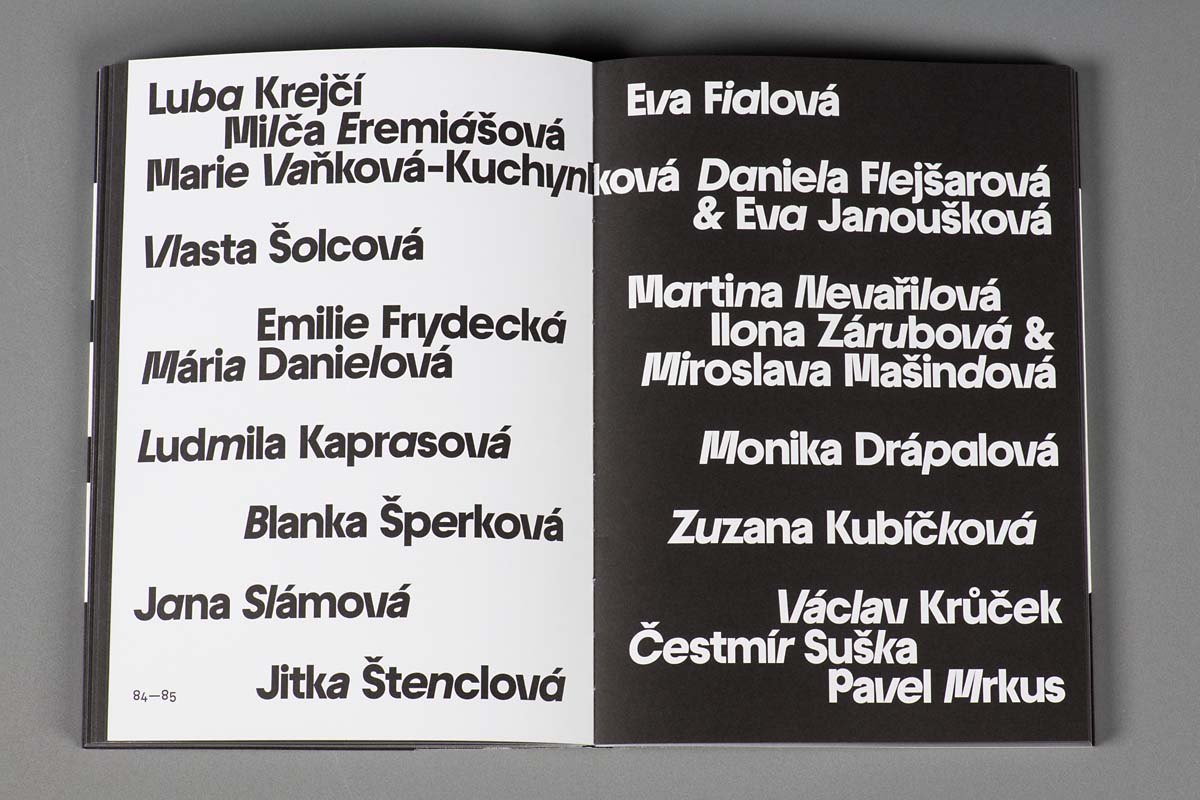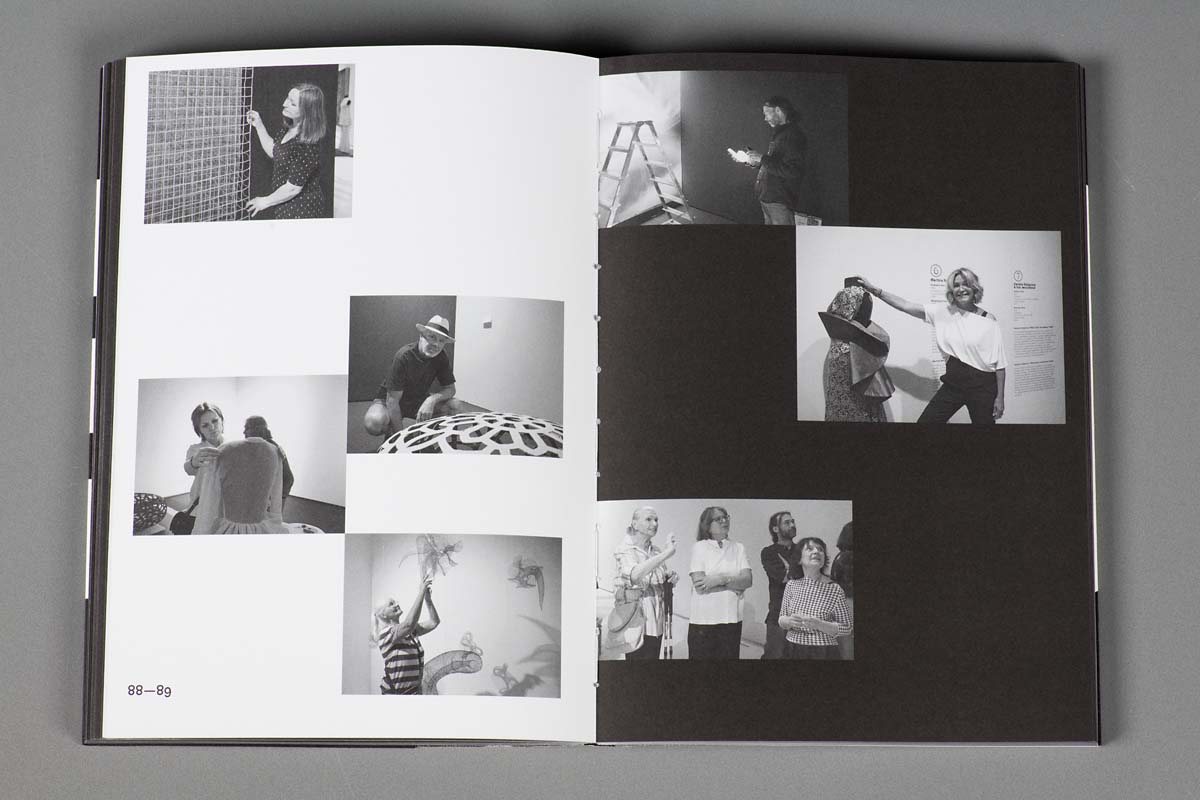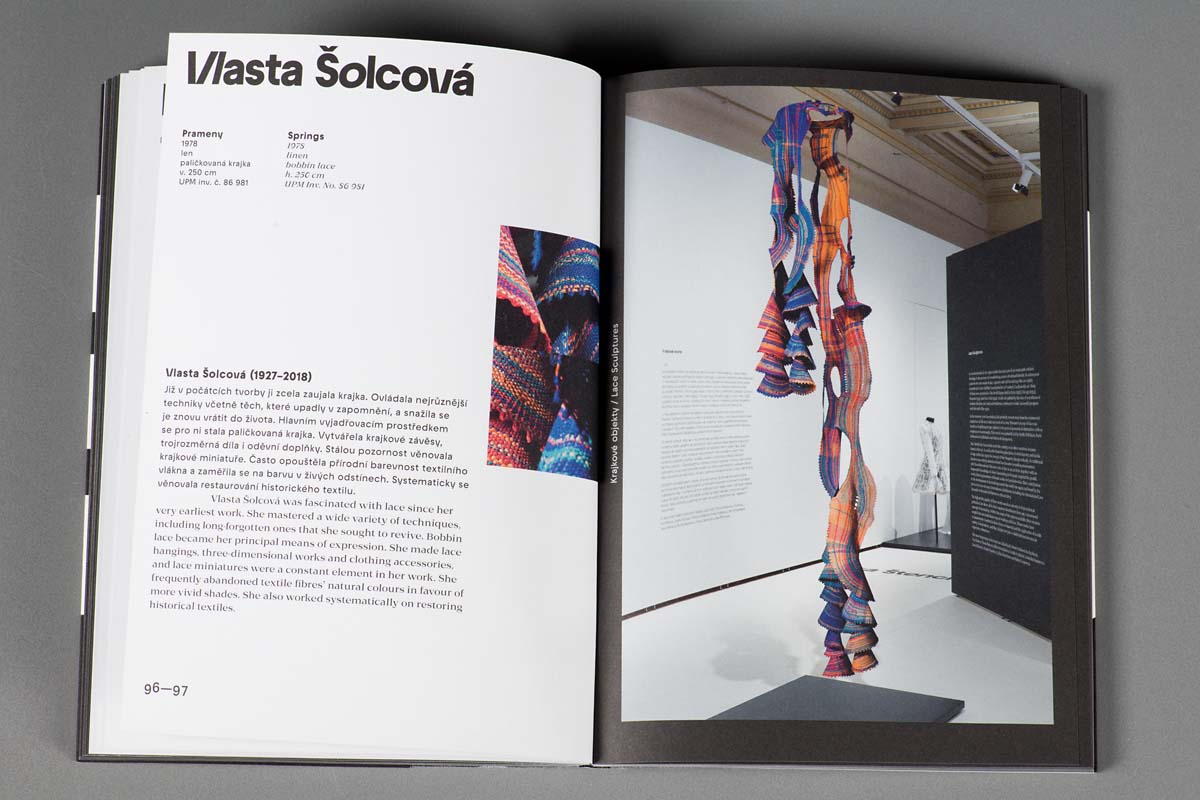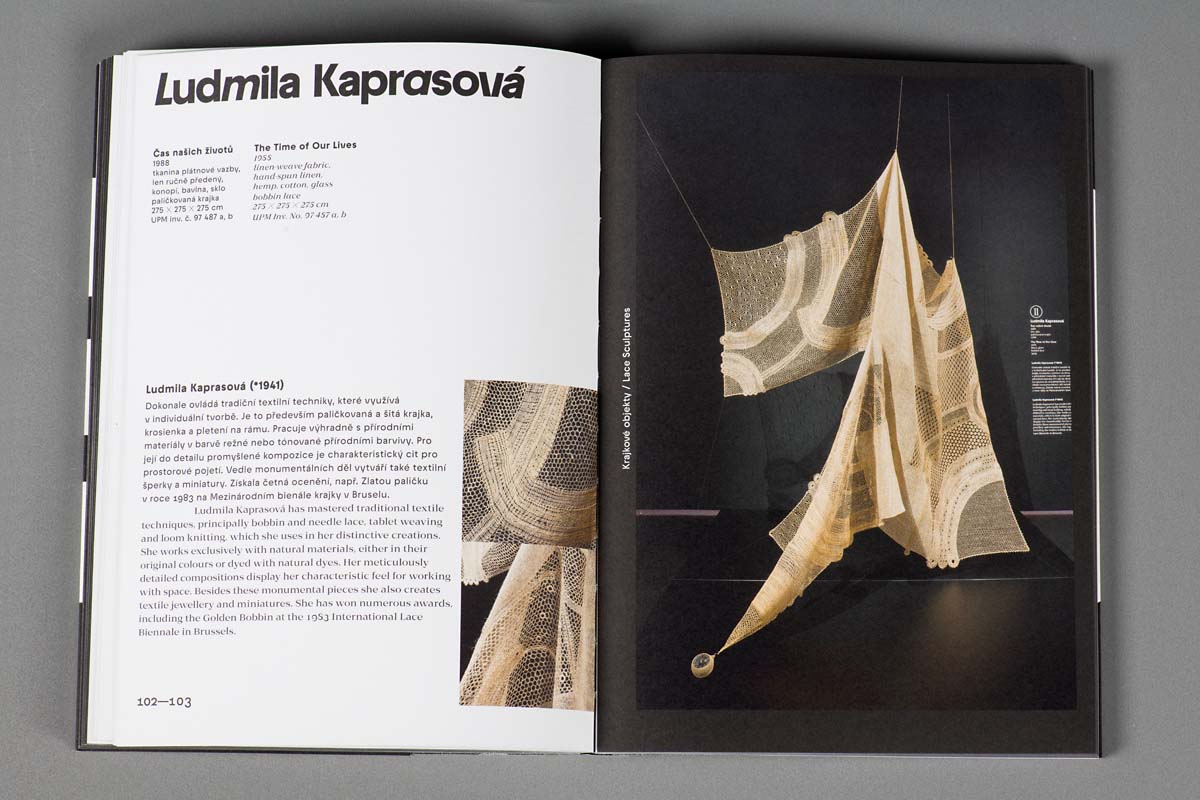Description
Today lace is considered a more or less marginal genre in art, yet it still retains its exclusive role as a guide to modern Europeans’ social destinies. From the Renaissance to the early 20th century, lace manufacture was associated exclusively with high fashion. Here, after the formation of Czechoslovakia as an independent state in 1918, textiles then became part of the avant-garde cultural ideology of the 1920s. The successful development of artistic disciplines in textiles, guided by the idea of a synthesis of modern lifestyles and national traditions, continued until the end of the 1930s. After the Second World War, textile art in Czechoslovakia, as in other countries, became closer to fine art, and in the late 1950s the concept of lace began to change radically. Its traditional function was entirely abandoned and lace became something monumental and three‑dimensional. This new view of lace as an art form, together with an impeccable knowledge of classic lacemaking techniques, inspired the prolific work of three generations of women artists in Czechoslovakia. Their contribution to the development of lacemaking around the world was confirmed by the prizes they won at many international exhibitions.
This catalogue has been published by the Museum of Decorative Arts in Prague to accompany an exhibition of the same name held at the Museum from 19 May to 11 September 2022 in conjunction with the 26th ICOM General Conference Prague 2022.
